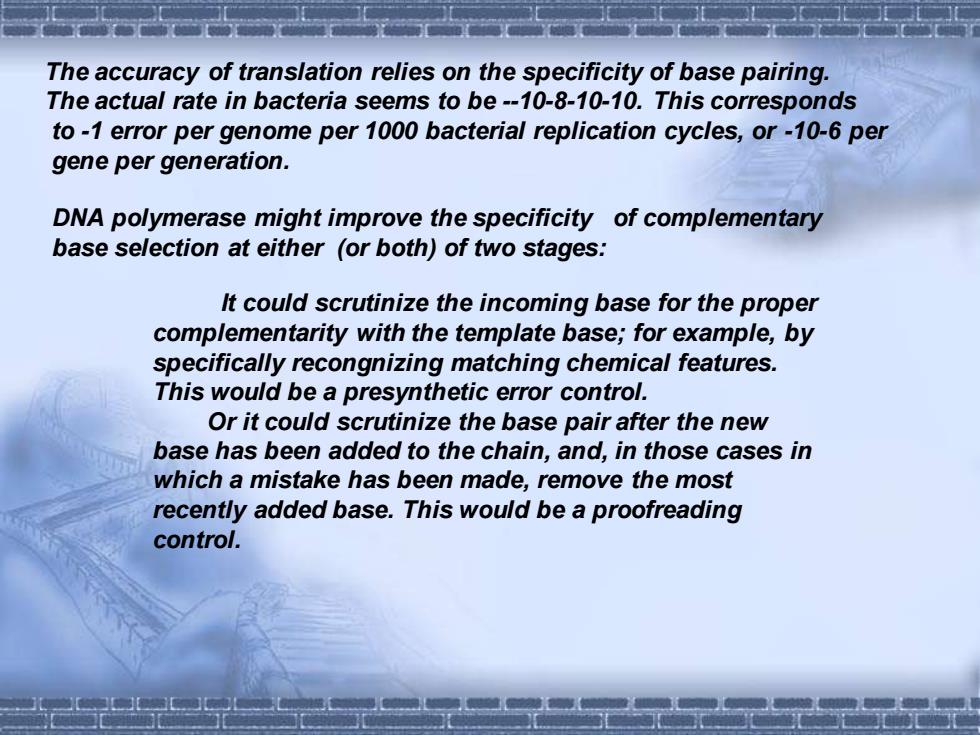正在加载图片...

The accuracy of translation relies on the specificity of base pairing. The actual rate in bacteria seems to be -10-8-10-10. This corresponds to -1 error per genome per 1000 bacterial replication cycles, or -10-6 per gene per generation. DNA polymerase might improve the specificity of complementary base selection at either (or both) of two stages: It could scrutinize the incoming base for the proper complementarity with the template base; for example, by specifically recongnizing matching chemical features. This would be a presynthetic error control. Or it could scrutinize the base pair after the new base has been added to the chain, and, in those cases in which a mistake has been made, remove the most recently added base. This would be a proofreading control.The accuracy of translation relies on the specificity of base pairing. The actual rate in bacteria seems to be -10-8-10-10. This corresponds to -1 error per genome per 1000 bacterial replication cycles, or -10-6 per gene per generation. DNA polymerase might improve the specificity of complementary base selection at either (or both) of two stages: It could scrutinize the incoming base for the proper complementarity with the template base; for example, by specifically recongnizing matching chemical features. This would be a presynthetic error control. Or it could scrutinize the base pair after the new base has been added to the chain, and, in those cases in which a mistake has been made, remove the most recently added base. This would be a proofreading control